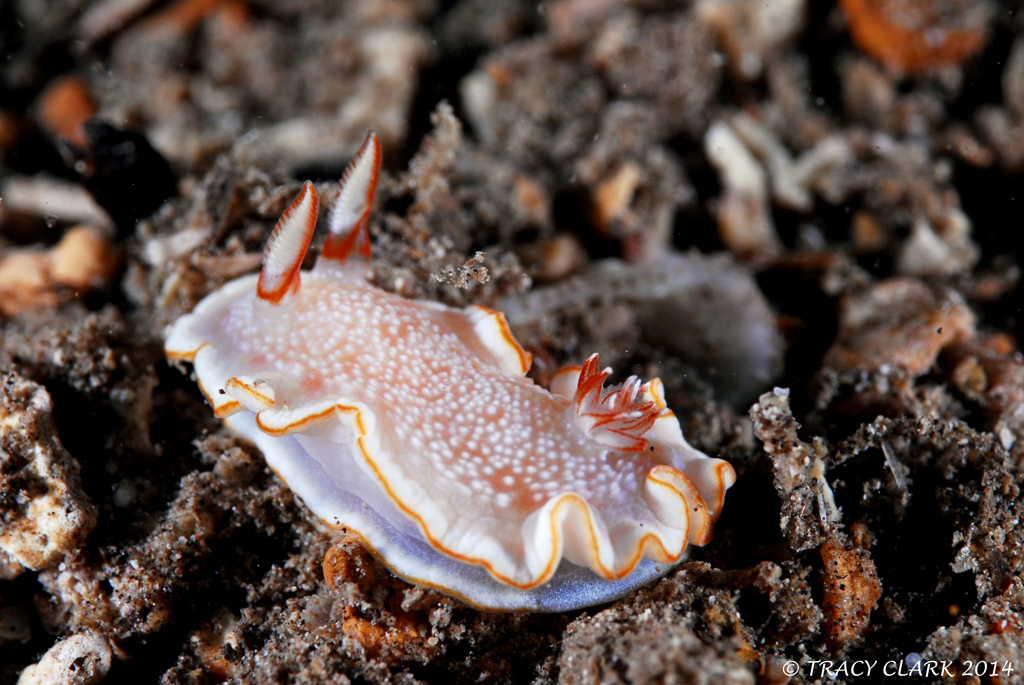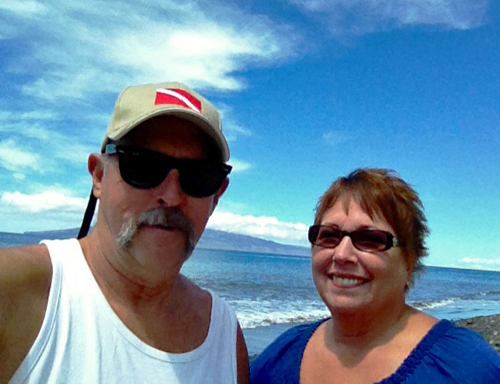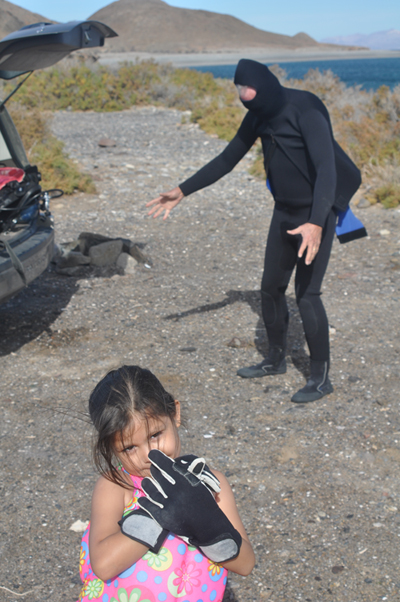 |
Ardeadoris poliahu
Image courtesy ofTracy Clark
Maui, Hawaii
Ardeadoris poliahu (Bertsch & Gosliner, 1989)
The “snowflake” nudibranch reaches about 60 mm in total length. Its dorsum has a frosted white speckling pattern, with scattered light brown ringlets. The frilly mantle edge is rimmed with white and yellowish-brown bands. Uncommonly found in caverns or on shaded cliffs, from 10-250 feet deep, throughout the main Hawaiian Islands. Records elsewhere in the Indo-Pacific need confirmation. Not much is known about its biology.
Images of this species can be found in one of the earliest Nudibranchs of the Week, BOW 44 and on Keoki and Yuko Stender’s SITE and on Pittman’s and Pauline Fiene’s SITE
Scott Johnson and I published the first picture of this species in our 1981 field guide, Hawaiian Nudibranchs.
The specific epithet, as is well known, refers to the Hawaiian goddess of snow, Poliahu, sister to Madam Pele of volcano fame! Although originally placed in the genus Glossodoris, Johnson and Gosliner placed it as an “hypothesized member” of the genus Ardeadoris, which is used in this BOW. Ardeadoris has an equally intriguing derivation–it’s a bird’s slug! Bill Rudman named the genus (1984) “from the Latin ardea, the heron, a reference to Heron Island, Great Barrier Reef, where the type species is commonly found.” So maybe it’s appropriate to show a sunrise-lifting heron at Bahía de los Ángeles , with a note that this location is the type locality of the only other tropical/subtropical snow-named nudibranch, Diaulula nivosa Valdés & Bertsch, 2010. A final naming note: Bill Rudman and I are the only two folks still moving who have named genera of Chromodorididae. For now.
Imperial Beach, Calif
Sept., 2014
Send Hans email at hansmarvida@sbcglobal.net
Profesor Investigador Visitante, Instituto de Investigaciones Oceanológicas, UABC
Honorary Member, Asociación de Investigadores del Mar de Cortés
Elected Member, Sociedad de la Antigua California
Tracy and Debbie Clark on location
 |
Getting to Maui is pretty easy compared to a lot of other dive destinations. In our case we leave from Bellingham International Airport heading to Seattle.
Although the word International makes it sound like a large airport it is in fact fairly small. This makes for an easier time at the airport, compared to lets say LAX or San Diego. Parking, check in,
security lines are all much quicker and easier than the big airports. As most divers and U/W photographers know luggage (shell type) is where the problems can start. We manage three suitcases which have our clothes
and two complete sets of dive gear and even my large dome port. I carry on one complete SLR U/W camera system except for the dome port, in a roller hardcase (in case I have to check it in).
|
 |
Hans preparing for dive at Bahia de los Angeles with granddaughter Ivette making sure the gloves fit. She is a big help. |
